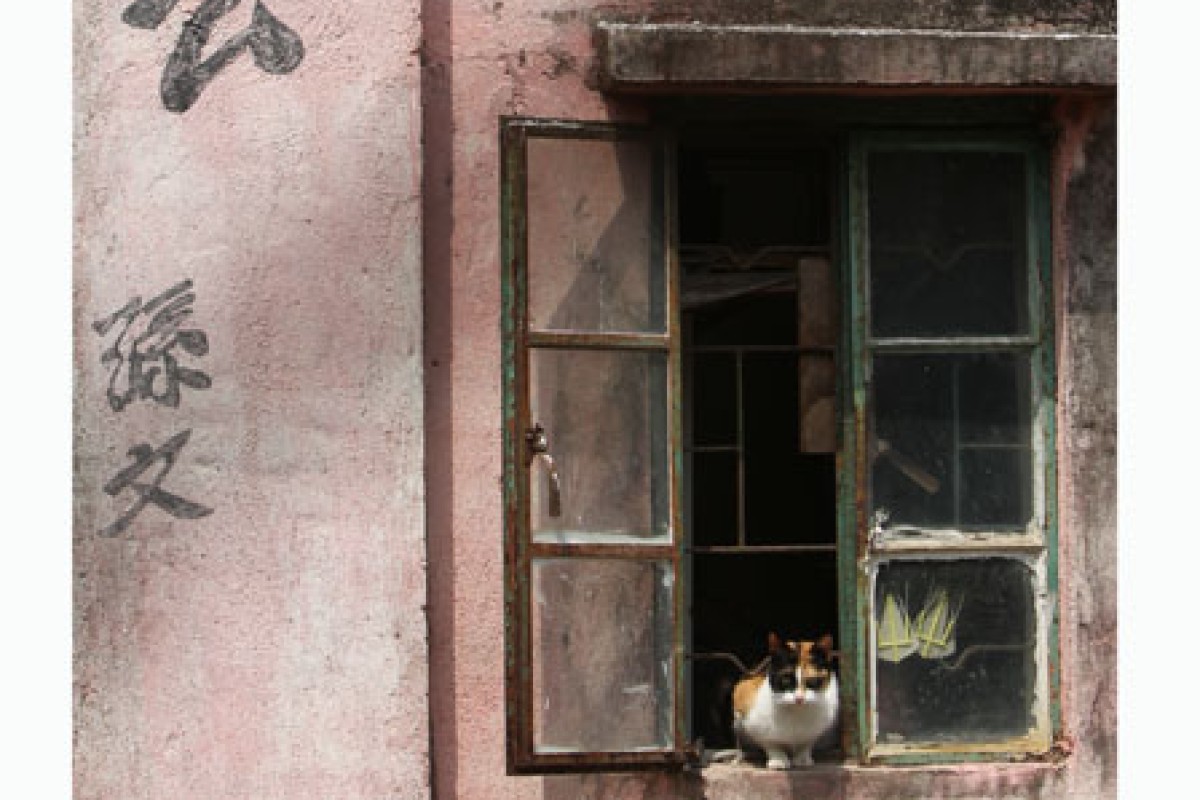 Hung Lau, a historic site related to 1911 Chinese Revolution, in Lung Mun Road, Tuen Mun. The building is left to decay and random alterations by occupants.
Hung Lau, a historic site related to 1911 Chinese Revolution, in Lung Mun Road, Tuen Mun. The building is left to decay and random alterations by occupants.Numerous proposals have been made to save the red-brick building in Tuen Mun over four decades, but some activists believe its neglect may stem from its close association with pro-Taiwan groups in Hong Kong.
Hung Lau, literally Red House, is part of the former Castle Peak Farm, which was used by revolutionaries as a place to store and experiment with firearms between 1901 and 1911. The building, the only reminder of the vanished farm, was rated as a grade-one historic building in 1986.
Despite a government surveyor's assessment in 1968 that the building was a century old, officials now say there are doubts that the structure is authentic. They have plans to conserve other revolution-related heritage sites but not this one.
"Historians have long concluded Hung Lau played a part in the revolution," Yuen Long district councillor Mak Ip-sing said. "I think the government just wants to play down its significance because of its association with the Kuomintang and Taiwan," said Mak, who is chairman of Highwise Yuen Long Service Centre, a pro-Taiwan group that manages the memorial ground next to Hung Lau.
The two-storey block is dilapidated and full of haphazard additions and alterations. The verandah has been sealed off with bricks, cement and wire gates. The balcony balustrades have been replaced. The traditional tiles on the roof have disappeared, replaced by metal sheets. The second floor has been subdivided into seven tiny rooms.
Mak said the roof tiles disappeared only six months ago.
The grounds, with a statue of Dr Sun Yat-sen and a pole flying the Taiwanese flag, have been used to host events to commemorate the founding of the Republic of China. The ceremonies were attended by pro-Taiwan sympathisers and officials from the Chung Hwa Travel Service, which acts as Taiwan's quasi-embassy in Hong Kong.
"We've been fighting for Hung Lau's conservation for 20 years," Mak said. "Heritage conservation shouldn't be mixed with politics. If the government does nothing, the building will collapse one day."
The Antiquities and Monuments Office said in a paper last month: "It is doubtful whether the existing Hung Lau is an original structure of Castle Peak Farm." However, according to government archival records, a maintenance surveyor said in an internal memo in 1968 that the building was "built approximately one hundred years ago" and that it was in serious disrepair to the extent that reconstruction was necessary to return it to public use.
The surveyor's comments were made after he conducted a structural assessment, which followed a proposal by then lawmaker Ellen Li that a memorial garden and museum be set up at Hung Lau.
But the proposal was shelved because officials did not want to liaise with the pro-Taiwan Sun Yat-sen Memorial Association of Hong Kong, which had also stepped in and made repeated requests to preserve Hung Lau. The colonial government thought such collaboration would be politically embarrassing.
In the 1990s and early 2000s, Tuen Mun District Council proposed an HK$86 million restoration plan for the building, but it was also shelved.
The antiquities office says the development proposal is still "subject to further study with the owner" because it involves private property and land matters.
The land register records the official owner as Li Shiu-kwan, a nephew of Li Ki-tong, who was a great financial supporter of the revolution and set up the Castle Peak Farm. The owner was reported to have offered to donate the site to the government in the 1990s. Li did not respond to inquiries, but his brother, Li Shiu-tsang, said through a spokeswoman that Hung Lau was "a case of years ago" and declined further comment.
Ho Puay-peng, an architectural heritage professor at Chinese University, said he could not rule out the possibility Hung Lau was built in the early 1900s, although the windows were of a later style. He said tests might be needed to determine its age, such as examining the bricks.
History professor Ho Pui-yin, a member of the Antiquities Advisory Board, said the government should conduct thorough research to determine the building's importance.
Hong Kong has only a few surviving sites connected to the revolution. A fortified structure in Ha Pak Nai, Yuen Long, and the residence of Ip Ting-sz, another supporter of Sun Yat-sen, have been declared monuments. Pak Tsz Lane in Central, a meeting place for revolutionaries, will be revamped by the Urban Renewal Authority into a memorial park.
This article was published in City, South China Morning Post on page 2 on Monday, March 28
